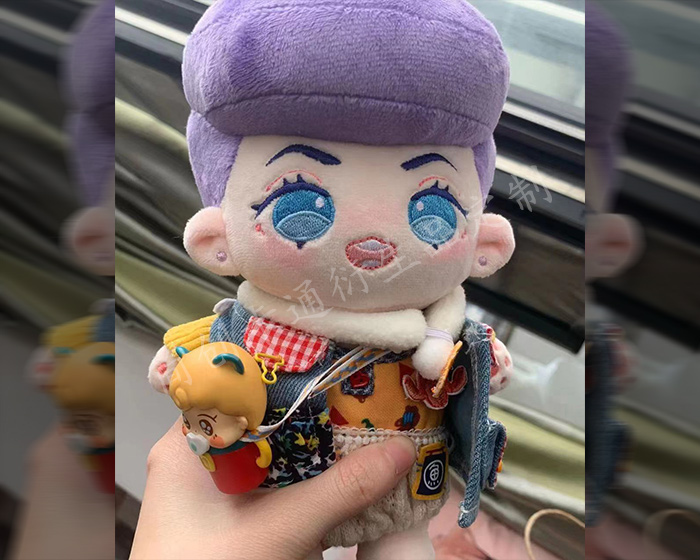Drying stuffed animals properly after washing is crucial to maintain their shape, texture, and overall integrity. Improper drying can lead to issues like mold growth, deformation, or damage to the materials. Here’s a comprehensive guide on how to effectively dry stuffed animals after washing.
1. Remove Excess Water
After washing, whether by hand or machine, the first step is to remove as much excess water as possible without damaging the toy. If you’ve washed the stuffed animal in a machine, avoid wringing it out, as this can distort its shape. Instead, gently press the toy against the side of the tub to let the water drain. If you washed it by hand, you can gently squeeze the toy, being careful not to twist or pull too hard.
2. Towel Drying
Once you’ve removed excess water, lay the stuffed animal flat on a clean, dry towel. Gently roll the towel around the toy to absorb more moisture. This method is effective in preventing the toy from becoming too wet, which can lead to mold or mildew. Use a second dry towel if necessary to ensure that the stuffed animal is as dry as possible before air drying.
3. Air Drying
Air drying is the safest method for drying Stuffed Animals. After towel drying, place the toy in a well-ventilated area. Ideally, choose a location that is not in direct sunlight, as UV rays can fade colors and damage certain materials. A warm, dry room is best. If possible, position the toy on a drying rack to allow air to circulate around it. Avoid placing it on surfaces that retain moisture, like a bathroom floor or damp basement.
4. Fluffing During Drying
As the stuffed animal dries, periodically fluff it to help maintain its shape. Gently shake or massage the toy to redistribute the filling and ensure that it dries evenly. This is particularly important for toys filled with synthetic fibers, as they can clump together when wet.
5. Using a Fan
To expedite the drying process, you can use a fan to increase airflow around the stuffed animal. Position the fan at a safe distance, ensuring that it doesn’t blow directly onto the toy to avoid distortion. This method can significantly reduce drying time while helping to prevent musty odors.
6. Dryer Method (If Applicable)
If the care label on the stuffed animal allows for machine drying, you can use a dryer with low heat settings. Place the toy inside a pillowcase to protect it from direct heat and friction. Adding a couple of clean tennis balls or dryer balls can help keep the filling fluffy and prevent clumping. Check the stuffed animal frequently to avoid overheating.
7. Final Inspection
Once the stuffed animal is dry, conduct a final inspection. Look for any remaining damp spots, particularly in seams or areas where moisture may have pooled. If you detect any dampness, allow the toy to air dry a bit longer.
Conclusion
Properly drying stuffed animals after washing is essential for preserving their appearance and functionality. By following these steps—removing excess water, towel drying, air drying, fluffing, and possibly using a fan or dryer—you can ensure your cherished toys remain clean, safe, and ready for cuddles. Taking care of stuffed animals in this way will help them last longer and stay a beloved part of your home.
The following are some examples of plush toys that our factory customizes for customers. Check out if there is one that you like best.
-
Custom Animal Plush
-
Cute Plush Doll
-
Custom Stuffed Animals
-
Plush Toy
-
Plush Dolls
-
Custom Stuffed Dolls
-
Custom Plush Toy
-
Cotton Dolls
-
Weighted Plush Toys
-
Cute Stuffed Animals
-
Custom Pet Stuffed Animal
-
Warmies Stuffed Animals
-
Weighted Stuffed Animal
-
Soft Toys
-
Plush Stuffed Doll
-
Custom Stuffed Dolls
-
Plush Maker
-
Bear Stuffed Toy
-
Anime Plush
-
Custom Stuffed Animal
-
Anime Plush
-
Custom Plush Toy
-
Personalised Stuffed Animal
-
Plush Animal Toys
-
Custom Plush Makers
-
Custom Plushies
-
Toy Manufacturer
-
Rag Doll Making
-
Custom Toys
-
Dog Plush Toys
-
Custom Rag Doll
-
Stuffed Animals
-
Custom Plush
-
Custom Plush Dolls
-
20cm Cotton Doll
-
Jojo Plush
-
Custom Doll
-
Jojo Doll
-
Large Plush Toys
-
15cm Cotton Doll
-
Dumpling Plush
-
Cotton Doll


























